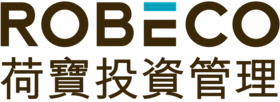

Greening it and meaning it – how the EU Taxonomy will defines SI
One of the issues with sustainable investing is how to define it, as it means different things to different people. What is truly green? Engagement Specialist Cristina Torres and Senior SI Analyst Elina Hokkanen explain how the new EU Taxonomy is laying down the meaning of what is sustainable for the first time.
概要
- EU Taxonomy will create harmonized definitions of ‘green’
- Companies and asset managers need to report alignment
- Companies and asset managers need to report alignment Two out of six environmental objectives developed so far
The EU Taxonomy is a new regulation that constitutes the cornerstone of the EU Sustainable Finance Action Plan. It aims to create a harmonized understanding of what actually constitutes ‘green activities’. The Taxonomy provides a common language and uniform criteria to identify the extent to which economic activities may be considered environmentally sustainable.
Ultimately, its aim is to reorientate capital flows towards lower-emission economic activities that will help decarbonize the economy. With this in its armory, the EU hopes to reach its 2030 climate targets and the ultimate goal of net-zero greenhouse gas emissions by 2050.
The Taxonomy defines the minimum criteria that economic activities should comply with in order to be considered environmentally sustainable. These activities should contribute substantially to one or more of the following six environmental objectives without doing any significant harm to any of the other five. These are:
Climate change mitigation
Climate change adaption
Protecting marine and water resources
Transitioning to a circular economy
Preventing pollution
Protecting or restoring biodiversity and ecosystems.
In addition, activities should be performed in compliance with minimum safeguards, meaning the standards embedded in the OECD Guidelines on Multinational Enterprises and the UN Guiding Principles on Business and Human Rights, with specific reference to the International Labor Organization’s Core Labor Conventions.
Only those activities contributing to the first two environmental objectives – climate change mitigation and adaptation – have so far been defined. In November 2020, the European Commission’s Platform on Sustainable Finance published the draft Delegated Act under the Taxonomy Regulation with the technical screening criteria for the 90 climate mitigation and 98 climate adaptation activities. The European Commission is now working on the final technical criteria to be adopted under a Delegated Act that supplements the Taxonomy Regulation.
Large listed companies incorporated in the EU are required to report which part of their revenue and expenditure is in line with the Taxonomy. These corporate disclosures are being introduced in two phases. In 2022, companies have started disclosing the percentage of revenues and expenditure in economic activities that are listed in the Taxonomy (i.e. eligible activities) as contributing to the climate change mitigation and climate change adaptation objectives.
From 2023 onwards, companies must also assess whether these eligible activities also comply with the technical screening criteria of the Taxonomy (i.e. aligned activities) covering all six environmental objectives.
The technical screening criteria sets a high bar on the environmental performance that activities must meet in order to evidence their substantial contribution to an environmental objective, and demonstrate that they do not significantly harm any other objective. As a result, there is the possibility that the percentages of Taxonomy-aligned figuresthat will be reported in 2023 are lower than the Taxonomy-eligible figures disclosed in 2022.
The funds in scope
Investors will have to disclose the percentage of their funds’ assets under management that sit within Taxonomy-aligned activities. Only funds classified as Article 8 or 9 are in scope for disclosures, i.e. those funds with environmental characteristics, or those pursuing a sustainability objective. This reporting requirement already entered into force in January 2022 under Level I legislation. From January 2023 onwards, financial products will disclose more granular information under Level II disclosures.
At Robeco, we believe that the Taxonomy will have a positive impact on the market. It will provide a common language for institutional and retail investors, issuers, policymakers and regulators. This will bring standardization and help overcome greenwashing in sustainable finance. Moreover, the disclosures on the Taxonomy alignment of investments will enhance the reliability of information, comparability and transparency on the level sustainability claims of an investment.
The data challenge
For each of the eligible economic activities, the Taxonomy provides detailed technical screening criteria that must be complied with in order to determine that an activity is Taxonomy-aligned. The activity-level focus is something new for most market participants. Whereas traditional ESG scores of companies focus on the company’s performance, the Taxonomy demands a deeper level of granularity in order to assess the eligible activities that companies undertake.
For example, to assess the level of alignment of an electric utility involved in energy generation from hydro, biomass and wind energy, the Taxonomy alignment will require testing each one of these activities against their respective technical screening criteria. Only the revenues or expenditures attributed to the activities that meet the criteria will count towards the total percentage of Taxonomy-aligned company revenues and expenditures.
Reporting revenue and expenditure
This assessment requires data that is currently not disclosed by companies. We view the lack of data as the biggest obstacle for a broad and consistent Taxonomy implementation. From 2022, large listed European companies are expected to report revenue and expenditure data broken down according to the Taxonomy’s classification. However, non-European companies will not be legally required to provide such disclosures, and data gaps from these companies will likely remain over the long term.
The European Commission is considering the establishment of an EU-wide digital access platform – the EU Single Access Point (ESAP) – where companies’ financial and non-financial information could be accessed free of charge by the public. Robeco sees the ESAP as a good opportunity to address the missing sustainability data required under the Taxonomy and other existing and forthcoming legislation, such as the Sustainable Finance Disclosure Regulation and the Non-Financial Reporting Directive.
Working towards a green finance market
There still is a long way to go before we are able to judge the successful adoption of the Taxonomy. In the near term, all eyes are set on the first round of Level II disclosures due in 2023. Preliminary research shows us that most funds will likely report low levels of Taxonomy alignment.
Research commissioned by the German Ministry of the Environment, Nature Conservation and Nuclear Safety assessed the alignment of European companies traded in the STOXX 50, CAC 40 and DAX 30 indices. It found that less than 30% of the revenue within these indices come from activities covered by the Taxonomy, and less than 2% fully met the technical criteria.
We believe that once the Taxonomy is fully developed, covering all six environmental objectives, more economic activities will become eligible. Once companies disclose all the data needed, investors will also be better able to identify eligible activities.
Part of a wider remit
The Taxonomy is only step one of the wider EU Sustainable Finance Action Plan and is viewed as a key building block for further actions. It forms the basis of the EU Ecolabel for retail funds that is still under development.
In 2020, the Technical Expert Group for Sustainable Finance published its final report on a EU Green Bond Standard, which provided recommendations for the establishment of a voluntary certification scheme which assures that the use of proceeds is fully aligned with the Taxonomy. In the second quarter of 2021, the EU Commission is planning a legislative proposal for the adoption of such a standard.
Financial institutions and European companies are now at the start of a process to standardize and formalize ESG data across market participants. But we are optimistic about the benefits that the Taxonomy, and the other actions under the Sustainable Finance Action Plan can bring in the long term. Looking beyond compliance, the Taxonomy will help investors identify opportunities from the energy transition and achieve sustainable investment goals.

SFDR regulation
SFDR is an evolving set of EU rules aiming to create a level playing field for how sustainable investment strategies are classified by asset managers. It helps to clarify the definition of a ‘sustainable fund’ and combat the growing threat of greenwashing.
Important information
The contents of this document have not been reviewed by the Securities and Futures Commission ("SFC") in Hong Kong. If you are in any doubt about any of the contents of this document, you should obtain independent professional advice. This document has been distributed by Robeco Hong Kong Limited (‘Robeco’). Robeco is regulated by the SFC in Hong Kong. This document has been prepared on a confidential basis solely for the recipient and is for information purposes only. Any reproduction or distribution of this documentation, in whole or in part, or the disclosure of its contents, without the prior written consent of Robeco, is prohibited. By accepting this documentation, the recipient agrees to the foregoing This document is intended to provide the reader with information on Robeco’s specific capabilities, but does not constitute a recommendation to buy or sell certain securities or investment products. Investment decisions should only be based on the relevant prospectus and on thorough financial, fiscal and legal advice. Please refer to the relevant offering documents for details including the risk factors before making any investment decisions. The contents of this document are based upon sources of information believed to be reliable. This document is not intended for distribution to or use by any person or entity in any jurisdiction or country where such distribution or use would be contrary to local law or regulation. Investment Involves risks. Historical returns are provided for illustrative purposes only and do not necessarily reflect Robeco’s expectations for the future. The value of your investments may fluctuate. Past performance is no indication of current or future performance.




















